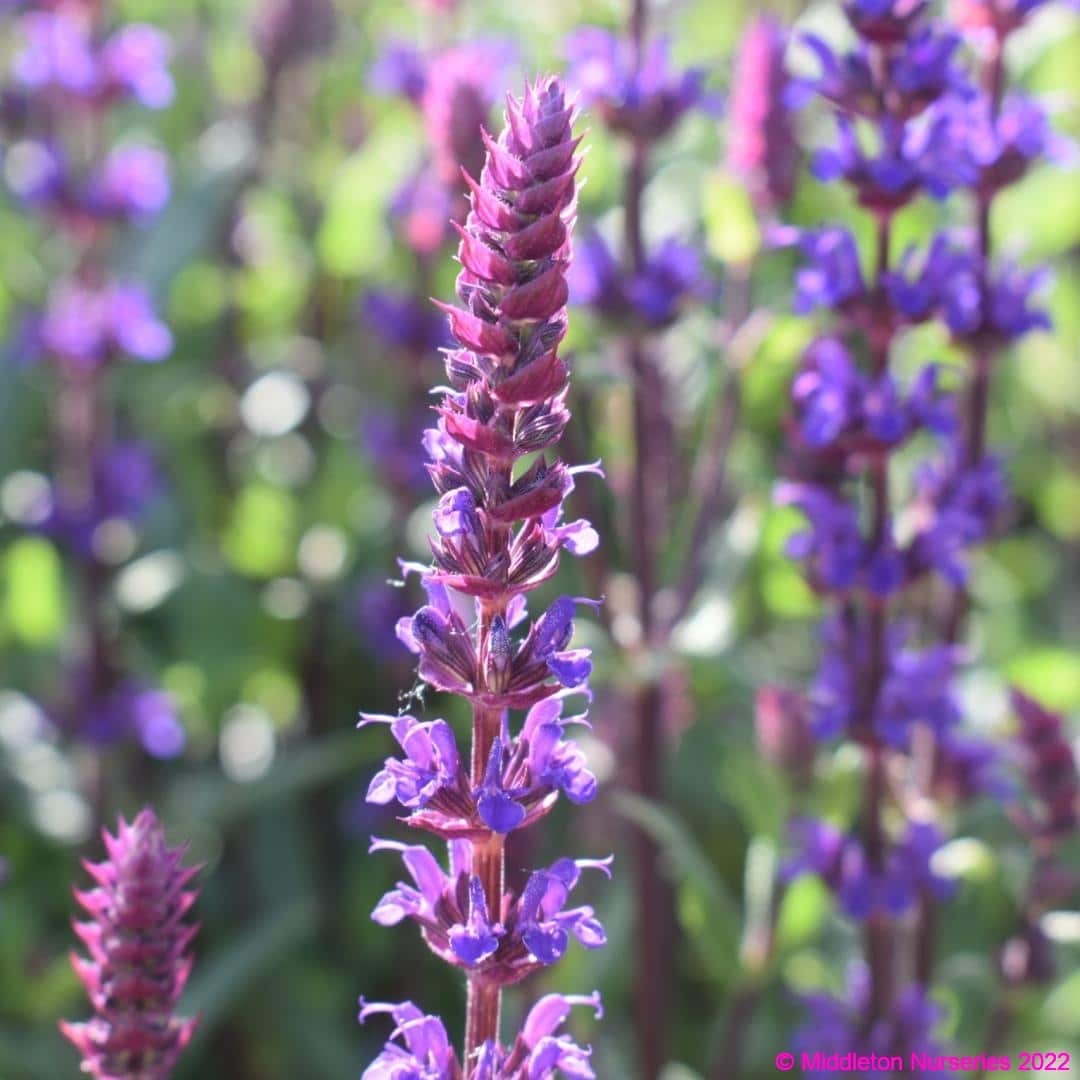Salvia nemorosa – Woodland Sage
Salvia nemorosa, commonly known as Woodland Sage, is a beautiful upright variety with a name rooted in its natural habitat—“nemorosa” comes from the Latin word for “forest.” Known for its aromatic, deep green foliage and an impressive range of flower colors, it blooms from spring through late autumn, making it a garden favorite.
A Brief History
This species was first documented by English botanist George Bentham in 1836 and is considered one of the earliest salvias to be explored. Native to Europe and Western Asia, it has also adapted well to parts of North America, where it thrives in woodland conditions.
Key Features
- Hardiness: Withstands temperatures as low as -15°C, making it ideal for colder climates.
- Propagation: Easily propagated from cuttings taken during the growing season.
- Planting Conditions: Prefers well-drained soil in full sun or partial shade.
- Watering Needs: Once established, it requires minimal watering and often thrives on natural rainfall.
Cultivation Tips
- Pruning: Prune in April, or when new shoots appear after frost, to encourage healthy growth. Deadhead spent flowers regularly to extend the blooming season.
- Cuttings: Propagate new plants from 8-10cm cuttings of fresh growth, taken from May onwards.
Popular Varieties
Salvia nemorosa comes in a wonderful selection of colors and forms, with some of the most popular varieties including:
- Salvia nemorosa ‘Caradonna’ – Rich violet-purple flowers on dark stems.
- Salvia nemorosa ‘Salvatore Blue’ – Intense deep blue flowers.
- Salvia nemorosa ‘Marcus’ – Compact variety with vibrant purple-blue blooms.
- Salvia nemorosa ‘Blue Hill’ – Soft, airy light blue flowers.
- Salvia nemorosa ‘Rose Marvel’ – Large rosy-pink blooms.
- Salvia nemorosa ‘Rianne’ – Stunning purple-violet flowers with a long flowering season.
Why Choose Salvia nemorosa?
With its long flowering period, striking colors, and pollinator-friendly blooms, Salvia nemorosa is an essential addition to any garden or landscape. Whether in borders, containers, or cottage gardens, it offers beauty, resilience, and easy care throughout the seasons.
